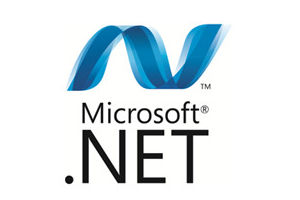10 recommended articles about MyClass
Generally speaking, .NET provides three different interface implementation methods, namely implicit interface implementation, explicit interface implementation, and mixed interface implementation. Each of these three methods has its own characteristics. First, let’s look at implicit interface implementation. This is probably the interface implementation we use most, because implicit interface implementation is .NET’s default interface implementation. Let's look at an example of implicit interface implementation: using System;internal class MyClass{public void SomeMethod(){// Use the interface to declare a Myinplement object IMyInterface iObj = new MyInplement();iObj.MethodA(); // Declare a Myinplement object using a class MyInplement obj = new MyInplement();obj.MethodB();}}public class MyInplement : IMyInterface{#region I
1. . Three interface implementation methods in NET

##Introduction: Generally speaking, .NET provides three different The interface implementation methods are implicit interface implementation, explicit interface implementation, and hybrid interface implementation. Each of these three methods has its own characteristics. First, let’s look at implicit interface implementation. This is probably the most commonly used interface implementation, because implicit interface implementation is .NET’s default interface implementation. Let's look at an example of implicit interface implementation: using System;internal class MyClass {public void SomeMeth...

3.
php extension development notes (1) Create array attributes of the class
Introduction:: This article mainly introduces PHP extension development notes (1) Creating array attributes of classes. Students who are interested in PHP tutorials can refer to it.4.
Detailed explanation of how to use Behaviors in PHP's Yii framework
Introduction::This article It mainly introduces the detailed method of using behaviors in the Yii framework of PHP. Students who are interested in PHP tutorials can refer to it.5. Introduction::This article mainly introduces range Parsing operator (::), students who are interested in PHP tutorials can refer to it.
6.
Operator: kernel implementation of instanceof instanceof in java instanceof android instanceof an instance of this
Introduction :instanceof: operator: Kernel implementation of instanceof: (All codes involved in this article are: php-7.0.4 version) There is a type operator instanceof in PHP, which is used to determine whether a PHP variable belongs to a certain class. Quote from the official document Example in: 7. Introduction: :final keyword: final in Chinese The meaning is final. Classes and methods modified with the final keyword are "final classes and methods". In other words, classes modified with the final keyword cannot be inherited, and methods modified with the final keyword cannot be inherited. Rewrite. If there is a class with the formula: final class MyClass{//......}, it means that other classes can no longer use the extends keyword to inherit this class. If there is a method modified with the final keyword, as follows. Representation: final function meth8.
Quick Fix 4 - PHP: Class Basics, Abstract Classes, Interfaces, Traits Introduction:: Quick Fix 4 - PHP: Class Basics, Abstract Classes, Interfaces, Traits: [Source Code Download] Quick Fix (4) - PHP: Class Basics, Abstract Classes, Interfaces, Traits Author: webabcd introduces the quick-fix PHP class basic abstract class interface trait example 1. Class-related knowledge points 1 (basic) class/class1.php Introduction: pretty rhythm dear my future: pretty rhythm dear my future PHP obtains the implementation code of the attributes and methods of a class: copy the code as follows: val1 = "foo"; $this->val2 = "bar"; return
Introduction: Basic accounting exercises and case answers: Basic accounting exercises and case answers PHP Basics: Classes and Objects 4 Scope Resolution Operator::: The scope resolution operator (also known as Paamayim Nekudotayim) or more simply a pair of colons can be used to access static members, methods and constants, and can also Used to access members and methods in the overridden class. When accessing these static members, methods, and constants from outside the class, the class name must be used. Paamayim Nekudotayim means double colon in Hebrew. Use the :: operator class MyClass { const CONS [Related Q&A recommendations]: C++ public method returns vector and The private vector is not in the same java - How to use IntelliJ to run a program with redirection symbols as parameters? java - How should this generic method be written to solve the design problem of The above is the detailed content of 10 recommended articles about MyClass. For more information, please follow other related articles on the PHP Chinese website!

Hot AI Tools

Undresser.AI Undress
AI-powered app for creating realistic nude photos

AI Clothes Remover
Online AI tool for removing clothes from photos.

Undress AI Tool
Undress images for free

Clothoff.io
AI clothes remover

Video Face Swap
Swap faces in any video effortlessly with our completely free AI face swap tool!

Hot Article

Hot Tools

Notepad++7.3.1
Easy-to-use and free code editor

SublimeText3 Chinese version
Chinese version, very easy to use

Zend Studio 13.0.1
Powerful PHP integrated development environment

Dreamweaver CS6
Visual web development tools

SublimeText3 Mac version
God-level code editing software (SublimeText3)

Hot Topics
 1387
1387
 52
52
 How to use various symbols in C language
Apr 03, 2025 pm 04:48 PM
How to use various symbols in C language
Apr 03, 2025 pm 04:48 PM
The usage methods of symbols in C language cover arithmetic, assignment, conditions, logic, bit operators, etc. Arithmetic operators are used for basic mathematical operations, assignment operators are used for assignment and addition, subtraction, multiplication and division assignment, condition operators are used for different operations according to conditions, logical operators are used for logical operations, bit operators are used for bit-level operations, and special constants are used to represent null pointers, end-of-file markers, and non-numeric values.
 What is the role of char in C strings
Apr 03, 2025 pm 03:15 PM
What is the role of char in C strings
Apr 03, 2025 pm 03:15 PM
In C, the char type is used in strings: 1. Store a single character; 2. Use an array to represent a string and end with a null terminator; 3. Operate through a string operation function; 4. Read or output a string from the keyboard.
 How to handle special characters in C language
Apr 03, 2025 pm 03:18 PM
How to handle special characters in C language
Apr 03, 2025 pm 03:18 PM
In C language, special characters are processed through escape sequences, such as: \n represents line breaks. \t means tab character. Use escape sequences or character constants to represent special characters, such as char c = '\n'. Note that the backslash needs to be escaped twice. Different platforms and compilers may have different escape sequences, please consult the documentation.
 The difference between char and wchar_t in C language
Apr 03, 2025 pm 03:09 PM
The difference between char and wchar_t in C language
Apr 03, 2025 pm 03:09 PM
In C language, the main difference between char and wchar_t is character encoding: char uses ASCII or extends ASCII, wchar_t uses Unicode; char takes up 1-2 bytes, wchar_t takes up 2-4 bytes; char is suitable for English text, wchar_t is suitable for multilingual text; char is widely supported, wchar_t depends on whether the compiler and operating system support Unicode; char is limited in character range, wchar_t has a larger character range, and special functions are used for arithmetic operations.
 The difference between multithreading and asynchronous c#
Apr 03, 2025 pm 02:57 PM
The difference between multithreading and asynchronous c#
Apr 03, 2025 pm 02:57 PM
The difference between multithreading and asynchronous is that multithreading executes multiple threads at the same time, while asynchronously performs operations without blocking the current thread. Multithreading is used for compute-intensive tasks, while asynchronously is used for user interaction. The advantage of multi-threading is to improve computing performance, while the advantage of asynchronous is to not block UI threads. Choosing multithreading or asynchronous depends on the nature of the task: Computation-intensive tasks use multithreading, tasks that interact with external resources and need to keep UI responsiveness use asynchronous.
 How to convert char in C language
Apr 03, 2025 pm 03:21 PM
How to convert char in C language
Apr 03, 2025 pm 03:21 PM
In C language, char type conversion can be directly converted to another type by: casting: using casting characters. Automatic type conversion: When one type of data can accommodate another type of value, the compiler automatically converts it.
 What is the function of C language sum?
Apr 03, 2025 pm 02:21 PM
What is the function of C language sum?
Apr 03, 2025 pm 02:21 PM
There is no built-in sum function in C language, so it needs to be written by yourself. Sum can be achieved by traversing the array and accumulating elements: Loop version: Sum is calculated using for loop and array length. Pointer version: Use pointers to point to array elements, and efficient summing is achieved through self-increment pointers. Dynamically allocate array version: Dynamically allocate arrays and manage memory yourself, ensuring that allocated memory is freed to prevent memory leaks.
 How to use char array in C language
Apr 03, 2025 pm 03:24 PM
How to use char array in C language
Apr 03, 2025 pm 03:24 PM
The char array stores character sequences in C language and is declared as char array_name[size]. The access element is passed through the subscript operator, and the element ends with the null terminator '\0', which represents the end point of the string. The C language provides a variety of string manipulation functions, such as strlen(), strcpy(), strcat() and strcmp().




